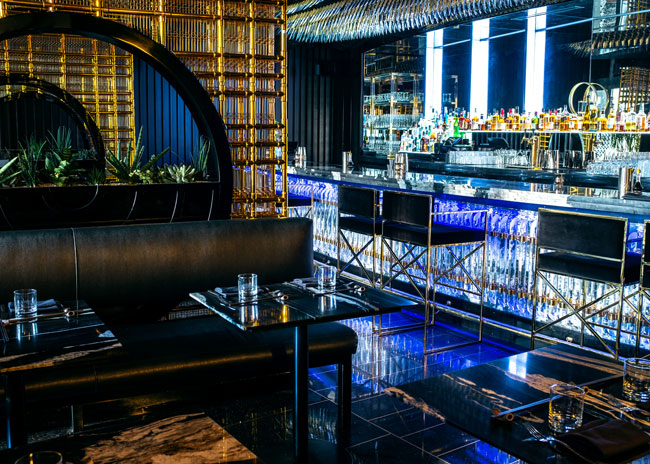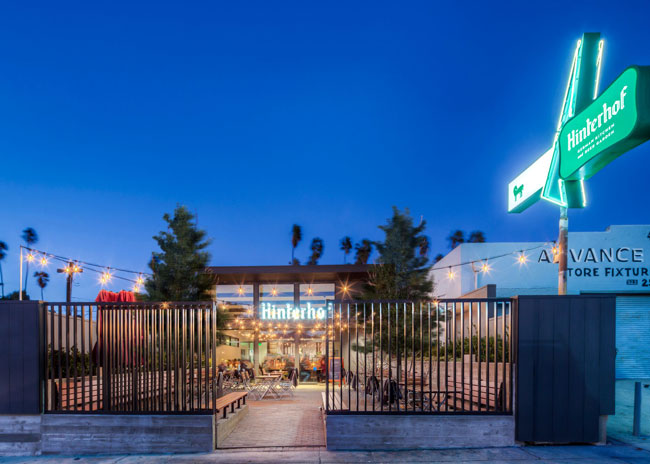Mobile pickup orders in foodservice have taken off since the pandemic and makeup as much as 50% to 60% of some quick-service operators’ businesses. It’s not just QSRs that are seeing an uptick; mobile ordering has become more commonplace in hotels, colleges and universities, country clubs and even healthcare and B&I operations.
Mobile order pickup stations come in a variety of iterations. From a basic shelving unit to cubbies to lockers that may or may not be temperature controlled; these areas are either manned by a staff member or self-service with the option to be either monitored or secured.
Main Considerations
Operators need to first determine the volume of these orders, which will reveal how much space to dedicate to a mobile order pickup station. Allocating space for this station also will depend on the type of operation and size of the bags or containers for to-go products.
Peak times should be assessed and managed so as not to run out of space for these items. Looking at the average to-go order size is key, keeping in mind that many tend to be single or smaller orders. It’s important to note that larger or multiple orders can be accommodated in more than one locker or cubby, if needed.
Volume will provide insight on the number or length of shelving, types of cubbies or number of lockers needed for adequate capacity. For lockers, the rule of thumb is each compartment can handle one order every 15 minutes. If it takes on average 10 to 12 minutes to make an order and extra time to program it in the locker for pick up, a 10-locker unit can handle approximately 40 orders per hour.
Modular locker compartments provide a range of sizes. Standard dimensions range between 12 and 40 inches tall, 12 to 40 inches wide and 16 to 22 inches deep. Some manufacturers sell custom sizes and shapes that are adaptable to the pickup space and volume needs.
Doors may open on the left, right, or up and down, depending on the model. These remain locked, with staff, customers or third-party delivery personnel gaining access using a secure code, receipt number or customer name on an integrated keypad or touchscreen. Doors then open automatically for easy access.
Dwell times, or the average length of time orders are sitting prior to pick up, also will impact the station’s design. Lengthier times may warrant heated and cooled cavities, so food quality and safety are not impacted. A mix of hot, cold and ambient holding may be necessary.
In addition to assessing volume, the locker location is key, as these systems should be placed in an accessible location for customers and/or delivery drivers. This is typically dictated by the restaurant layout and available space. Lockers are generally situated in dining rooms, hallways, breezeways or any area away from congregating customers and staff. Logistics is another consideration since the staff should not go too far out of the way to load the lockers, and these need to be convenient for customers and delivery drivers. The closer to the kitchen the locker can be placed, the better for increased loading efficiency and maintaining temperature consistency for refrigerated or heated lockers.
Security is another consideration. For unsecured pickup areas utilizing tables, shelving or cubbies, a location where employees can monitor order pickups is ideal. Operations utilizing lockers with customer or pickup codes are not as vulnerable to theft, so constant monitoring isn’t necessary.
In addition, locker configuration is a main consideration. Front loading formats are designated for existing restaurants and do not offer access to the back of house. Larger footprints or new builds can benefit from flow-through models. This is because these systems provide increased efficiency and quick, easy access for employees, customers and delivery drivers from both sides of the locker.
Technological Advancements
There have been several new developments with mobile order pickup station equipment.
Lockers are available that can be programmed as needed to hold food hot, cold or at ambient temperatures. It takes time to heat or cool a locker space, even though it’s small, so continuously changing the temperatures within each locker is not feasible. Setting temperatures to change for different dayparts is more realistic. Also, broadly speaking, food should not be held in heated compartments for more than 45 minutes as quality can be negatively impacted.
Heated bookshelves are also available with a digital timer to control temperatures on each shelf. These can be mixed and matched to hold hot and ambient food.
Some types have incorporated sophisticated controllers and interfaces, allowing operators to connect multiple lockers or satellite units to one controller. Advanced software with some systems provides restaurant operators with specific data and analytics on pickup volume and the travel time for food to reach the locker from the back of the house. Along with exterior branding capabilities, locker performance can be linked with a restaurant’s branded app for both customer use and marketing capabilities.
It also is possible to link point-of-sale systems to lockers, however — unlike plug and play models — this can be more complex to implement. These systems communicate via a cloud and typically have a monthly service fee or additional costs associated with setup and use.
Mobile order pickup stations and their design are likely to evolve as mobile ordering has become more common in the last several years. In a recent pulse survey, only 13% of rd+d readers said they were not including mobile or takeout areas in their current restaurant designs. A third of readers surveyed said they are adding pickup shelving or other types of storage with mobile ordering in mind. Another 24% said that they were adding separate entrances or exits to accommodate mobile ordering traffic while 18% noted that they were designing larger bar or hostess areas to accommodate mobile orders. Finally, 12% said they were adding or enhancing drive-thrus with mobile ordering in mind.
Pickup Lockers 101
Pickup lockers are typically utilized by customers who order online or through an app and by delivery drivers, both in-house and third-party representatives, who work to deliver digital orders.
While smaller or single orders generally can be held in one locker compartment, larger orders may be separated into two, three or more lockers. For larger orders spanning multiple lockers, the same code will work across multiple compartments allowing for easy access and seamless retrieval.
Those concepts with an emphasis on to-go orders and larger footprints may do best with two or more locker systems, which will reduce wait times due to lines and crowds.
The core construction materials used in pickup lockers is typically sheet metal, similar to traditional lockers. However, differences ramp up from there. Glass doors and interior lighting, including LED, can be implemented for content visibility. Locker colors vary, depending on the manufacturer. Branding capabilities on the unit’s exterior may be available for marketing purposes.
There are different pickup locker formats available. These systems offer a choice of floor-mounted, countertop, built-in or freestanding designs. Lockers may have one-sided access or provide a door on one side for employees to load orders, with a second door on the opposite side for customer or delivery driver food retrieval.



